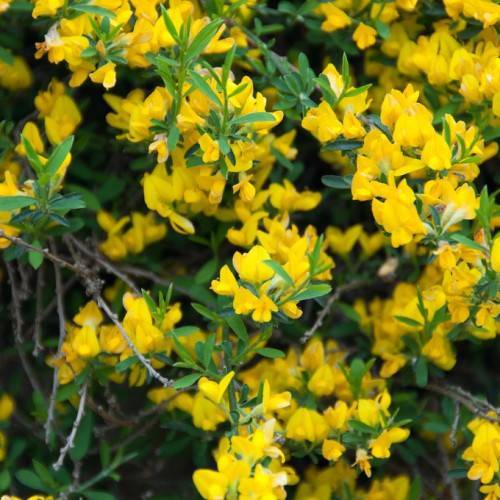
spreading broom
Genista pilosa
Cycle:
Perennial
Watering:
Minimum
Hardiness Zone:
7
Flowers:
Flowers In Spring
Sun:
Full sun, Part sun/part shade
Soil:
Well-drained
Fruits:
Fruits In Summer Ready In Summer
Leaf:
Yes
Growth Rate:
Moderate
Maintenance:
Low
Salt Tolerant:
Yes
watering
For watering Genista lydia, it is important to provide regular hydration for optimal health and growth. This plant species can handle a moderate amount of water, and prefers approximately 1 inch per week during the growing season (spring and summer). However, when watering Genista lydia, it is important not to overwater. It is best not to water the soil every day, but rather to give the soil a deep watering every few days, depending upon the type of soil and how quickly the soil dries out. When watering, be sure to water the soil and not the plant's foliage, as this can lead to mildew and other issues. In the fall and winter months, reduce watering as the plant goes dormant.
sunlight
Lydia genista (Genista lydia) is a perennial shrub native to the Mediterranean region. It thrives in sunny locations and requires a minimum of 6 hours of direct sunlight per day to produce its vibrant blooms and foliage. In areas with more intense sunlight, it may require even more to achieve its maximum potential. It does require some indirect light as well, but over-exposure to strong sunlight can scorch its foliage. The best time of day to provide this plant with light is during the morning and afternoon hours when the sun is most intense. That being said, it should not be exposed to direct sun for more than 12 hours per day.
pruning
When to Prune: Pruning should be done in early spring before new growth begins, or in late fall after the plant is done flowering and has gone completely dormant. How Much to Prune: The amount of pruning required will depend on the desired shape and size of the plant. When pruning to control its size, remove up to 1-third of the oldest branches, cutting them all the way down to the ground. To encourage more vigorous growth and more abundant blooms, selectively prune away 1-fourth of the oldest canes, cutting these at an angle just above a new growth node.
